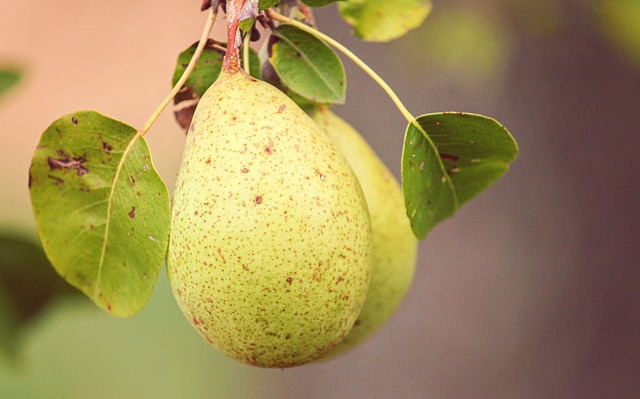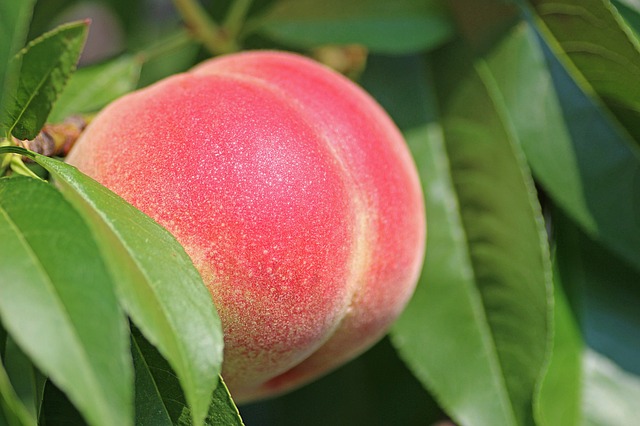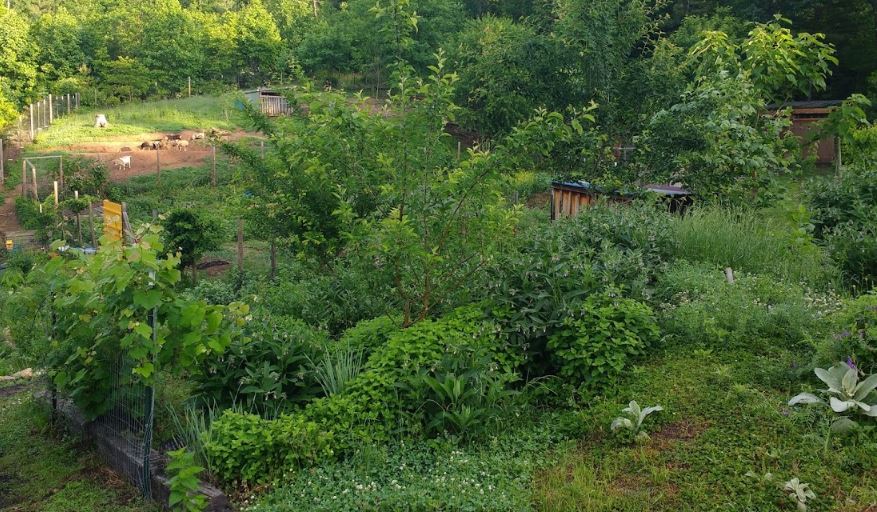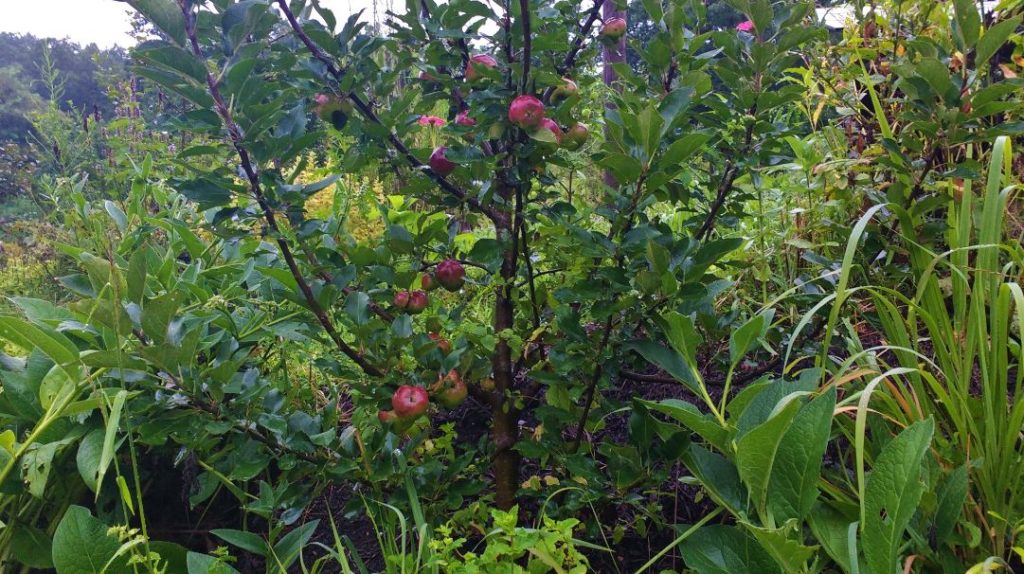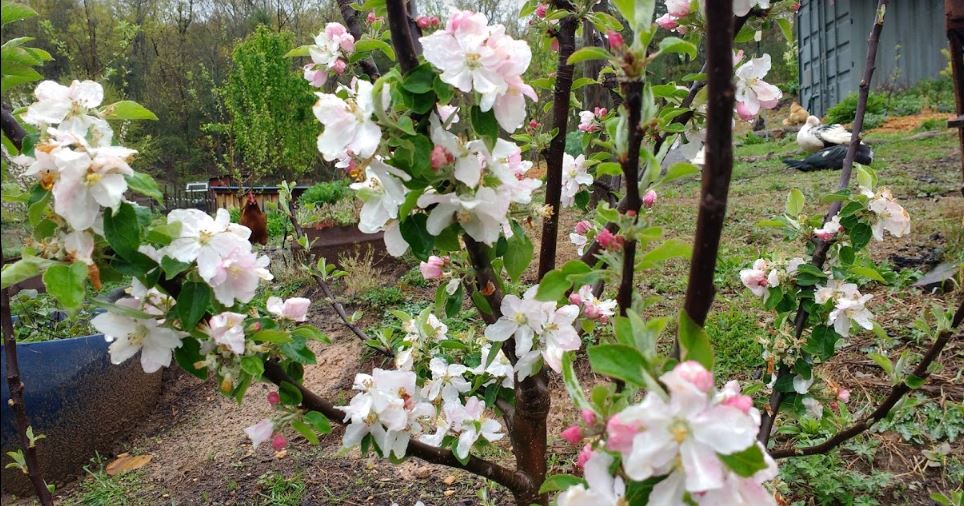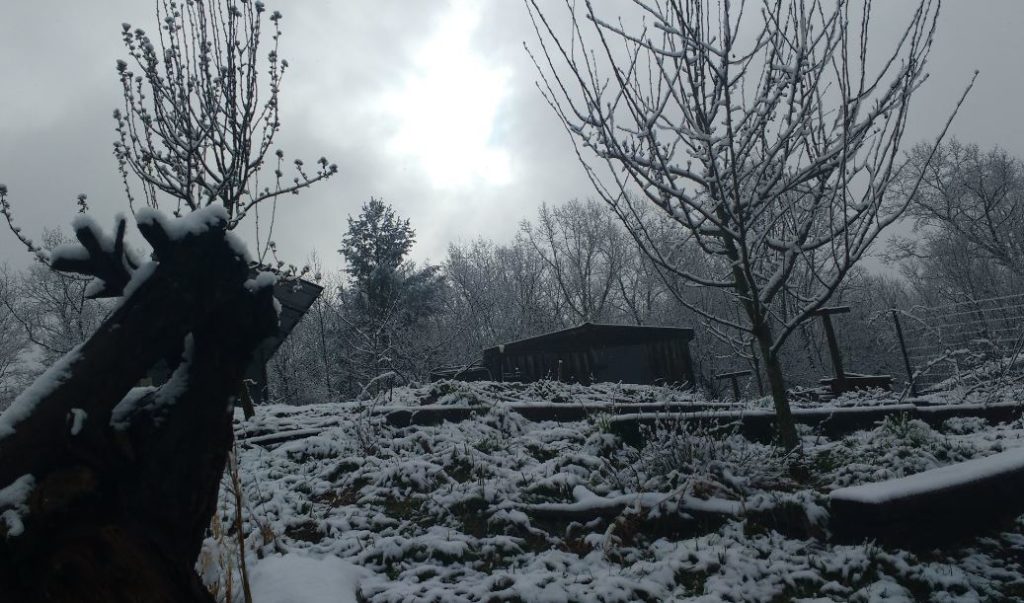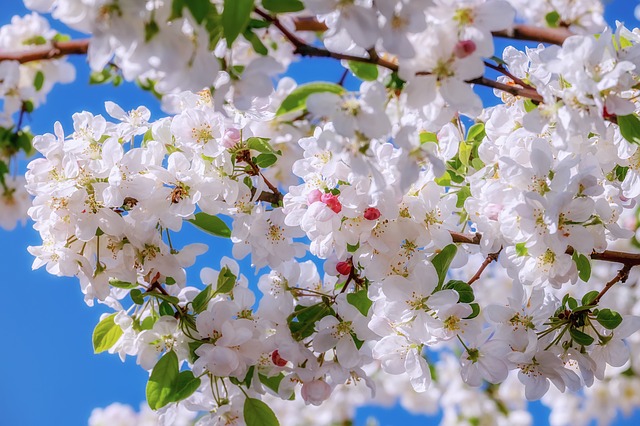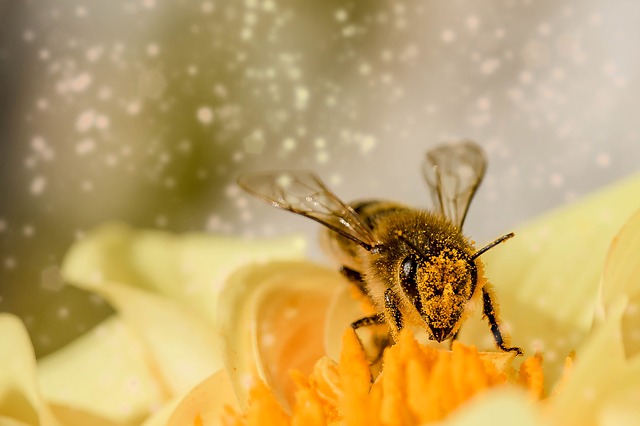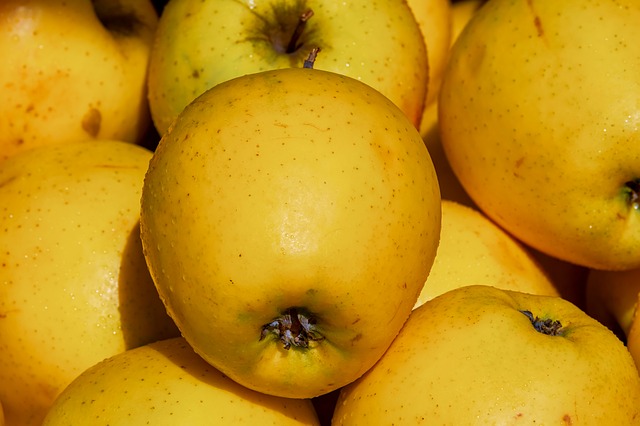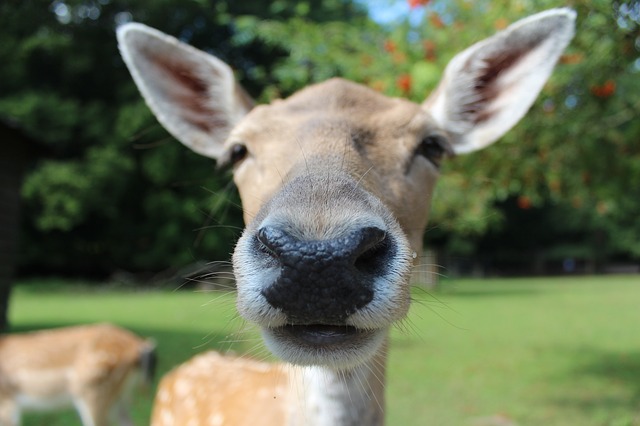Planting fruit trees in fall has a lot of advantages over spring planting. Here’s why—and what you need to know to succeed.
Advantages of Planting Fruit Trees in Fall
Until I started homesteading, I thought fruit trees had to be planted in spring because that’s when they went on sale at the big box hardware stores. Now, though, I know that planting fruit trees in fall is often an even better idea.
Why Spring Might Not Be the Best Time to Plant Fruit Trees
There are a couple of reasons why spring-planted trees endure more stress than fall-planted trees.
Reproductive Drive
In spring, trees are eager to flower and reproduce. The fruit that grows from the buds contains the seeds that will eventually grow into new trees.
When you buy trees from nurseries, they are usually a few years old. This means they are at an age when they are likely to start fruiting. With spring-planted trees, you have to aggressively remove flower buds to ensure trees don’t waste all their energy trying to produce that first year.
You May Also Enjoy:
“Planting Fruit Trees from Seed: What About Chill Hours?”
Since most fruit trees do not produce in late summer or fall, by planting at this time, you don’t have to do that extra work of pinching off buds to keep trees focused on root growth.
Transpiration Trouble
In hot weather, trees transpire to keep themselves cool. Transpiration is the plant equivalent of human perspiration. Plants draw moisture from their roots to cool their leaves. This moisture evaporates and acts like an air conditioner for the trees.
For spring-planted trees without well-established root systems, frequent, deep watering is a must to ensure they don’t overheat. So unless we’ve invested in a good irrigation system, chances are that newly planted trees will often run short on moisture at the root zone. As a result, they won’t be able to stay cool in high temperatures.
When plants can’t transpire, their leaves dehydrate and die. That loss of leaves means trees can’t photosynthesize and send sugars to the roots.
Trees don’t always die from the loss of leaves. As temperatures cool in fall, they may put on new leaves in a last ditch effort to put up some food for winter.
Unfortunately, despite those valiant fall food-storage efforts, it’s not always enough to last all winter long. As a result, plants often die during the dormant season when they run out of food.
A lot of people mistakenly think their trees died from things like frost or hard freezes. However, what they really died from was starvation that started back in summer when they couldn’t transpire during intense periods of heat.
Why Is Planting Fruit Trees in Fall Better?
Late summer and fall are when deciduous trees store up their food for winter. They use all that foliage grown in spring to catch sun and transform it into food.
They also take advantage of cooler, typically more moist, soil conditions to drive roots deeper into the ground.
This natural desire to set roots and store food means fall-planted trees focus on setting roots as soon as you put them in the ground.
In order for this to work, though, you must plant trees that are healthy and have good top growth. A half-naked tree planted in fall won’t have the leaf capacity to support optimal root growth and is just as likely to die as a dehydrated, overheated spring-planted tree.
Plant Only Healthy, Well-Cared-For Fruit Trees
This is why it’s critically important to only plant trees that have obviously been well-cared-for during the hot months. Sourcing trees from reputable mail-order nurseries or buying direct from local growers you trust is key.
Good growers keep trees in shade, water regularly, and otherwise ensure that trees grown for sale have lots of top growth and root moisture at critical times.
Choose the Right Trees
Regardless of when you plant, choosing trees that are suited for your environmental conditions is the only way to ensure their survival.
Cold Hardiness
Thanks to a pretty aggressive educational campaign by the USDA, many gardeners (or soon-to-be gardeners) are familiar with the idea of cold hardiness in plants. If you live in the U.S., you can easily discover your cold-hardiness zone. Additionally, most plant tags, or nurseries, can immediately tell you the cold tolerance of the plants they offer for sale.
Cold hardiness, or what the USDA refers to as plant hardiness, is only the measure of a plant’s ability to withstand the average frosts in your area. It is not a blanket guarantee that a plant is suitable for all the growing conditions in your area.
You May Also Enjoy:
“Growing Bananas and Other Tropical Delights Beyond the Tropics”
“The Top 10 Tropical Staple Crops (VIDEO)”
“Zone-Pushing Tips for Growing Ginger and Turmeric in Cold Climates”
For example, I live in USDA Plant Hardiness Zone 7a. According to the USDA, this means I need to plant trees that are rated for ground freezes down to 0-5°F. With wind chill, though, our actual lows often fall below this average. Therefore, when I choose plants for my landscape, I make sure they are cold hardy for Zone 6.
Cold hardiness is just one of the many pieces of information you need to use to choose the right fruit trees for your landscape.
Heat Hardiness

Image by Gerhard G. from Pixabay
With climate change being our new reality, many of us are having to deal with heat waves like we’ve never experienced before. Thanks to the efforts of the American Horticultural Society (AHS), heat hardiness is now being measured in plants.
If you live in areas with more than a few days a year over 85ºF, you really want to consider plants that are rated as heat tolerant. However, heat-hardiness data is not yet as prevalent as cold-hardiness data. You can’t always find this information on labels or in catalogs yet.
Since this information is not universally available, you may need to dig deeper and get anecdotal evidence to determine whether plants are suitable for your climate.
Case in Point: Seaberry and Siberian Peashrubs
For example, seaberry (or sea buckthorn) and Siberian peashrubs are two often-referenced permaculture plants. These both fix nitrogen in the soil while providing potential food sources for humans and livestock. Therefore, they are very attractive to those of us interested in creating self-sustaining landscapes using methods like permaculture.
Unfortunately, I can tell you from experience that the Siberian peashrub drops its leaves when temperatures remain over 80ºF for more than a few days. As a result, these plants are severely stunted in my landscape, even though all other conditions are right for optimal growth.
The seaberry also grows at a snail’s pace in our hot climate. After 4 years of aggressive care, it still hasn’t produced food. Therefore, I would not recommend either of these plants for hot climates.
Using search engines to look for this kind of anecdotal evidence is a good idea for all the perennials that you plant.
Chill Hours
A fellow master gardener volunteer once told me, “All deciduous plants have chill-hour requirements.” I don’t know for sure that this is true, but for spring-flowering fruit trees and shrubs, chill hours are absolutely critical.
“Chill hours” are the number of hours air temperatures are between 32-45ºF. (There are other definitions of chill hours, but they all oscillate around this basic temperature zone.)
Early Bloom
Chill hours are basically a plant’s dormancy clock. Plants go dormant in winter to protect themselves from dying during extended cold. After a certain number of hours of moderately cold (but not freezing) temperatures, the plant’s clock says something like this:
“Well, we’ve had our 300 hours of moderate cold for this year, so winter must be over and spring must be on the way. The next time it gets warm and sunny, let’s grow some blooms so we can reproduce!”
Then, the next time there’s a warm day, the plant will bloom in response to the sensation of warmth. Given the unprecedented temperature highs and lows in winter months that are occuring in so many places, these kinds of “false positives” for spring in plants with low chill-hour requirements are becoming more prevalent.
You May Also Enjoy:
“Clone Your Favorite Tree With Easy Air-Layering”
“7 Ways to Use Pine Trees for Food and Medicine, Year-round”
Because we transport trees around the world, we can easily put a tree with a 300-chill-hour timer in a zone that has 1,200 chill hours each year. When we do, that plant will almost always try to flower too soon. Those blooms will usually die when the normal cold weather returns a couple of days later.
Eventually, that poor plant will succumb to sadness over its repeated failures to reproduce (or it will just freeze to death).
Never Bloom
Now, if you tried to plant a tree that needed 1,500 chill hours in an area that only has 1,200 a year, you’d get a different problem. Instead of setting blooms and losing them to cold, you’d never even get blooms. That tree would also be likely to die from reproductive frustration or heat exhaustion.
If you have planted fruit trees or shrubs that should be producing and are not, and you’ve never even seen blooms, check the chill-hour requirements for your variety. Then, find the chill-hour calculator for your region and find out if you met the requirements.
If you can’t find a chill-hour calculator for your area, check with your agricultural or extension office.
Goldilocks Chill Hours
If you want good fruit production, you need to match a plant’s chill hours to your average chill hours. With climate change upon us, this will sometimes mean that you won’t get fruit in an extremely cold or hot winter. However, matching average chill hours is still a better goal than not considering them at all.
Pollination
Pollination is another special issue to keep in mind when choosing fruit trees. Fruit trees are either self-fertile or they require cross-pollination.
When you look at fruit tree catalogs (online or printed) from reputable sources, you should either see a notation that the plant is self-fertile or you should see recommendations for pollinizers. (Pollinators are insects, birds, or other critters that do the pollinating. Pollinizers are the plants that provide the pollen the pollinators use).
Cross-Pollinated
For cross-pollination, you need at least two different varieties of the same kind of fruit that have the same bloom period. Some plants only require pollination from another similar plant. Others may require pollination by a male (non-fruiting) version of the same kind of plant.
As an example, the Golden Delicious apple is known to have multiple long-bloom periods, so many of us apple growers plant a Golden Delicious tree in the middle of several other apple tree varieties to ensure good cross-pollination.
Self-Fertile
Self-fertile trees either do not require pollination or can be pollinated by their own blooms and still set fruit. However, even self-fertile trees prefer the company of other pollinizers. You may get even better yields if you plant a pollinizer near self-fertile trees, too.
Planting Requirements
Every plant also has its own special planting requirements. Soil pH, nitrogen and other mineral needs, drainage conditions, sunlight preferences, wind resistance, and other factors will all need to be considered prior to planting for best results.
Using an at-home soil test to determine pH is a good place to start. Without the right pH, trees have no chance of success.
You May Also Enjoy:
“At-Home Soil Test Kits: How to Use Them . . . And Why You Should”
“Banana Trees: Tips for Planting and Growing (Even During a Cold Snap!)”
Amending your soil as needed with key minerals and mycorrhizal inoculant is also an important preparation to make before or during planting.
Applying specific recommendations from other seasoned growers in your area can also dramatically increase your success rate.
Planting and Care Tips
When you go to the trouble of buying and planting trees, it makes sense to use best practices and the best protection methods available to ensure your plants grow.
Plant at the Right Height
One of the main reasons fruit tree growth is stunted is because new gardeners plant trees too deep. Never plant trees deeper than their original height in the pot. You can even plant an inch or two aboveground to allow room for settling and the application of mulch.
Do Not Compact Soil Around Trees
Another big mistake in tree planting is to stomp on the root mass to make the tree stand up in the soil. This compacts the soil and slows root growth.
Instead, stake trees to hold them in place until the roots begin growing in their new environment.
Protect Trees from Pests
If you have problems in your area with pests such as deer and voles, you need to protect plants at the time of planting. Using tree collars or wire-mesh baskets around trees can deter deer.
Voles need to be thwarted at the root zone, such as by putting 1/2″ wire-mesh baskets directly in the soil as a barrier to digging. Also be sure to protect aboveground with mesh baskets.
Skip the Fall Fertilizer
We fertilize trees in spring to help with bloom and leaf production. However, if you fertilize in fall, you encourage trees to produce leaves rather than set deep roots.
Skip the fertilizer when planting fall trees. Instead, incorporate lots of well-aged compost into your soil prior to planting to help with root establishment.
Mulch Is a Must
In summer, heat and shallow roots are the big concern. Mulching around new trees helps preserve moisture to improve transpiration.
In fall, we need to prevent the moisture loss that comes mostly from wind and dry winter air. Applying several inches of mulch around the tree root area after planting protects young roots from these potentially drying conditions.
You May Also Enjoy:
“Straw vs. Hay: Which Makes a Better Mulch?”
“How to Sheet Mulch for an Abundant Garden”
“High-Performance Garden Show, Episode #19: Mulch, Mulch, Mulch”
Never mulch directly around the trunk, though, as this encourages root growth at the trunk level rather than underground. It also creates pathways for pests and pathogens. You also run the risk of covering the graft union in grafted trees, which can lead to the rootstock overriding the grafted variety. Instead, spread the mulch starting a few inches outside the trunk area.
Also, use appropriate mulch. For plants with pH needs above 5.5, double-shred hardwood works well. For plants with pH needs below 5.5 (such as blueberries), pine needles or mulched oak leaves are a better choice to keep from raising the soil pH during decomposition.
Water Regularly
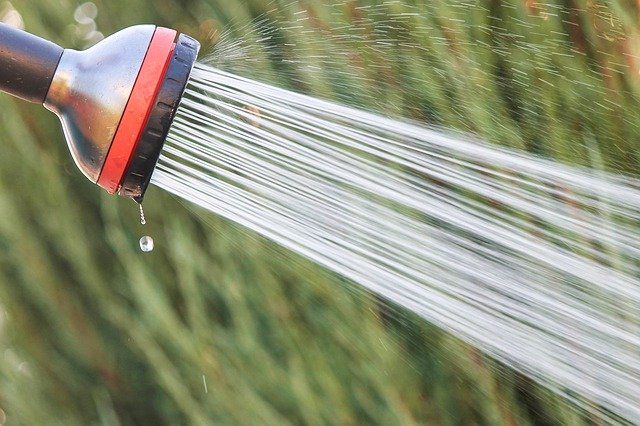
Image by Manfred Richter from Pixabay
Plants don’t require watering when the ground is frozen. However, when the soil temperature is above freezing, plant roots will still draw nutrients and water from the soil.
Make sure newly planted trees continue to get adequate water whenever the ground is not frozen. Watering needs vary by tree type, so read up on your plant’s needs to determine the right amount.
Plant With Care
Plants are alive. New science is also proving what we gardeners already knew—plants have the ability to communicate with other life forms in their surroundings.
This means you!
Planting is a great time to bond with your new plants and make them feel welcome. A loved and appreciated plant is more likely to be a healthy plant.
Whether you believe this or not, planting while in the right state of mind can make it a relaxing and meditative act for you, too. Plus, planting in fall when the weather is good gives you an excuse to be outside and take advantage of a beautiful day!
So . . . what are you waiting for? Get out there and plant a new fruit tree!
What Do You Think?
What are you going to plant this year? Do you have a favorite source for purchasing trees? Do you have any tips that have worked for you? Please take a moment to share your hopes and experiences with our Community!
________________
The Grow Network is a participant in the Amazon Services LLC Associates Program, an affiliate program designed to provide a means for our team to earn fees for recommending our favorite products! We may earn a small commission, at no additional cost to you, should you purchase an item after clicking one of our links. Thanks for supporting TGN!

Tasha Greer is a regular contributor to The Grow Network and has cowritten several e-books with Marjory Wildcraft. The author of “Grow Your Own Spices” (December 2020), she also blogs for MorningChores.com and Mother Earth News. For more tips on homesteading and herb and spice gardening, follow Tasha at Simplestead.com.
